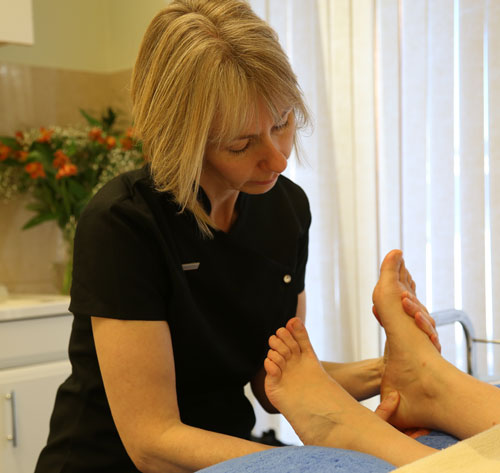Everyday life experiences can create sustained stress. Daily and sustained stress disrupts physiological and energetic processes at a cellular level, leading to many health complaints. The main difference between a person experiencing everyday stress of living and post-traumatic stress disorder (PTSD) is that in the latter, the person is exposed to extreme trauma.
A fully trained Reflexologist can act as a facilitator in the healing journey. Connecting with a person who is dedicated to the healing process, can allow the “cellular memory” of traumatic events to release and dissipate. People do have the ability to heal themselves given the correct therapeutic environment.
Here are a few facts about PTSD:-
- PTSD is not everyday stress.
- Not everyone exposed to a traumatic event will develop PTSD.
- PTSD is a highly complex condition and people experience different combinations of stressors and respond and heal differently.
- All stress including PTSD, changes biological, biochemical and bioenergetics processes. Healing occurs when the body and mind reset to normal regulation.
- While pharmaceuticals treat symptoms, reflexology heals holistically.
- Reflexology and other forms of bodywork are highly effective in helping achieve homeostasis.
Different types of traumatic events can be categorised into the following:-
- Intentional Human Events (man-made) e.g. war, family violence, hijacking, kidnapping, alcoholism, criminal assault, rape, bombing.
- Unintentional Human Events (accidents, technological disasters) e.g. explosions, fire, nuclear disaster, structural collapse, plane, train, car, ship disasters.
- Natural Disasters e.g. hurricanes, earthquakes, avalanche, sudden death syndrome.
Why do some develop PTSD and why do others not:-
It is very individual how one person responds to the stress to another. Usually the healthier the person is before the trauma, the less severe the symptoms are following the trauma. The more support a person receives after the incident the less intense the acute stress reaction is. There is no cure as such for PTSD, however, it is possible to bring closure to the experience. Resilience and the ability to move forward and regain life’s purpose is all possible with the correct support and treatment.

